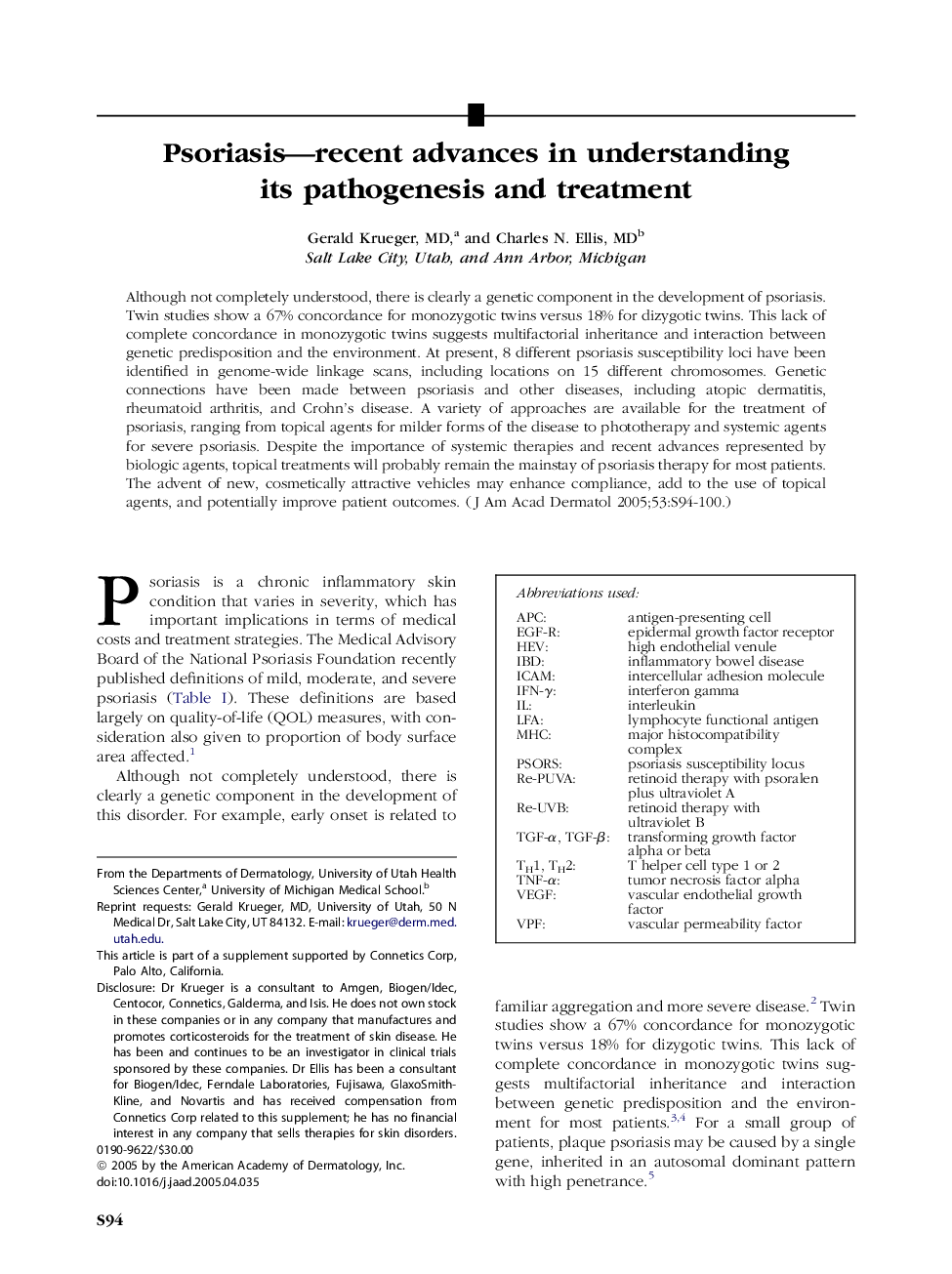| Article ID | Journal | Published Year | Pages | File Type |
|---|---|---|---|---|
| 10010952 | Journal of the American Academy of Dermatology | 2005 | 7 Pages |
Abstract
Although not completely understood, there is clearly a genetic component in the development of psoriasis. Twin studies show a 67% concordance for monozygotic twins versus 18% for dizygotic twins. This lack of complete concordance in monozygotic twins suggests multifactorial inheritance and interaction between genetic predisposition and the environment. At present, 8 different psoriasis susceptibility loci have been identified in genome-wide linkage scans, including locations on 15 different chromosomes. Genetic connections have been made between psoriasis and other diseases, including atopic dermatitis, rheumatoid arthritis, and Crohn's disease. A variety of approaches are available for the treatment of psoriasis, ranging from topical agents for milder forms of the disease to phototherapy and systemic agents for severe psoriasis. Despite the importance of systemic therapies and recent advances represented by biologic agents, topical treatments will probably remain the mainstay of psoriasis therapy for most patients. The advent of new, cosmetically attractive vehicles may enhance compliance, add to the use of topical agents, and potentially improve patient outcomes.
Keywords
VPFTh1, Th2HEVICAMIBDAPCLFAEGF-RIFN-γantigen-presenting cellinterleukinInflammatory bowel diseasetumor necrosis factor alphavascular permeability factorVascular endothelial growth factorVascular Endothelial Growth Factor (VEGF)TNF-αMHCmajor histocompatibility complexintercellular adhesion moleculehigh endothelial venuleInterferon gammaEpidermal growth factor receptor
Related Topics
Health Sciences
Medicine and Dentistry
Dermatology
Authors
Gerald MD, Charles N. MD,
